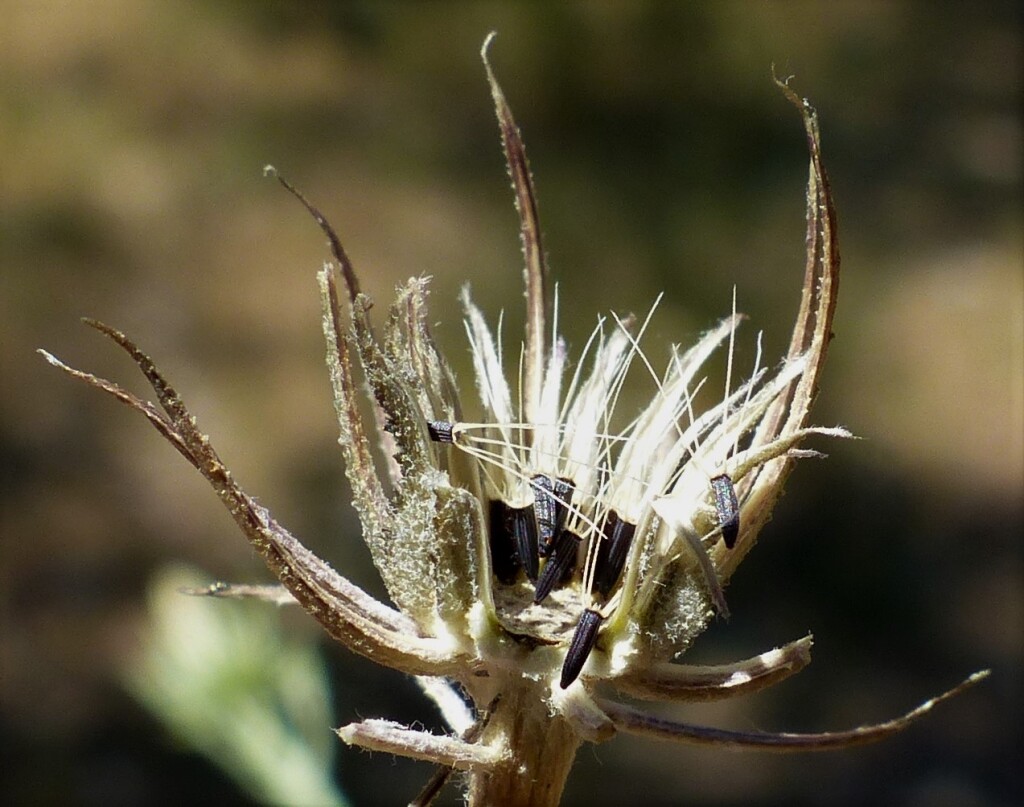Tolpis barbata
(L.) Gaertn. Yellow HawkweedErect simple or few-branched annual to 60 cm high, often pubescent near base. Basal leaves petiolate, oblanceolate to lanceolate, 2–11 cm long, 0.5–2 cm wide, acute, entire to serrate, sparsely pubescent or cobwebbed; cauline leaves few, petiolate to sessile, narrow-elliptic to linear, to 10 cm long and 10 mm wide. Capitula 10–20(–30) mm diam.; involucral bracts 5–10 mm long, pubescent at least basally; outer bracts enlarging in fruit. Outer florets with ligules 4–5 mm long, yellow; inner florets with ligules 2–3 mm long, yellow or purplish. Cypselas 1–2 mm long; the outer pubescent, pappus c. 0.3 mm long; the inner ones glabrous, pappus c. 0.1 mm long with 2–5 bristles 2–3.5 mm long. Flowers mostly Sep.–Jan.
MuM, GleP, VVP, VRiv, GipP, OtP, WaP, Gold, CVU, DunT, NIS, HSF, HNF, VAlp. Also States except NT. Native to the Mediterranean region, South Africa, America. Widespread in Victoria, usually north of the Great Dividing Range, where found mostly along roadsides, in wasteland and other disturbed sites.
Plants with smallish capitula and with all florets pale yellow, have often been referred to T. umbellata Bertol. This variant, however, does not differ from T. barbata in any other significant characteristics and is treated here as synonymous with that species. It occurs throughout the range of typical T. barbata in both Australia and Europe.
Jeanes, J.A. (1999). Asteraceae. In: Walsh, N.G.; Entwisle, T.J., Flora of Victoria Vol. 4, Cornaceae to Asteraceae, pp. 652–666. Inkata Press, Melbourne.
 Spinning
Spinning




